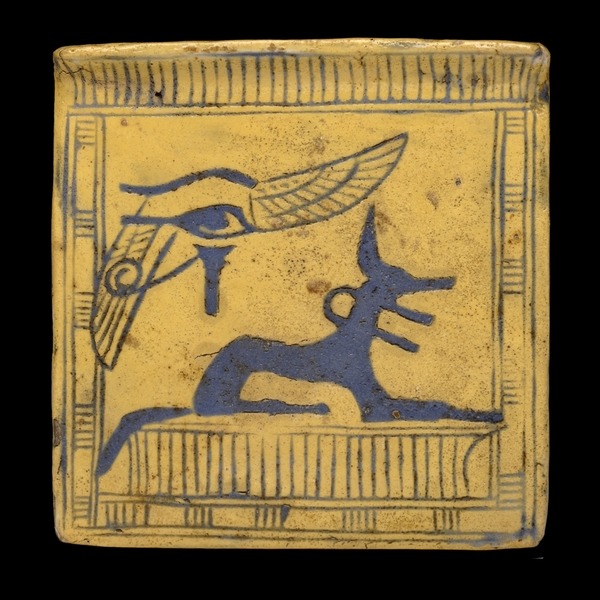
Length: 11 cm
Faience pectoral - A symbol of protection and resurrection
From Egypt
New Kingdom, perhaps reign of Ramesses II, around 1250 BCE
Pectoral necklaces were laid on the chest of a mummy, and usually bore an image associated with the wish for protection and a successful passing into the next world. They were first used in ancient Egypt by royalty, but by the time of the New Kingdom (1550-1070 BCE) they were also used by the élite classes.
This example has two protective images. The wedjat eye represents restoration to heath and thus resurrection. Anubis is the god of embalming and a protector of the deceased; both images are common elements in the decoration of private tombs of the New Kingdom.
The use of yellow faience is a further reference to resurrection, this time through the rising and rays of the sun.
F.D. Friedman (ed.), Gifts of the Nile: Ancient Egypt (London, Thames and Hudson, 1998)
Via http://bbs.artron.net/viewthread.php?tid=913908&extra=page%3D1&page=13
